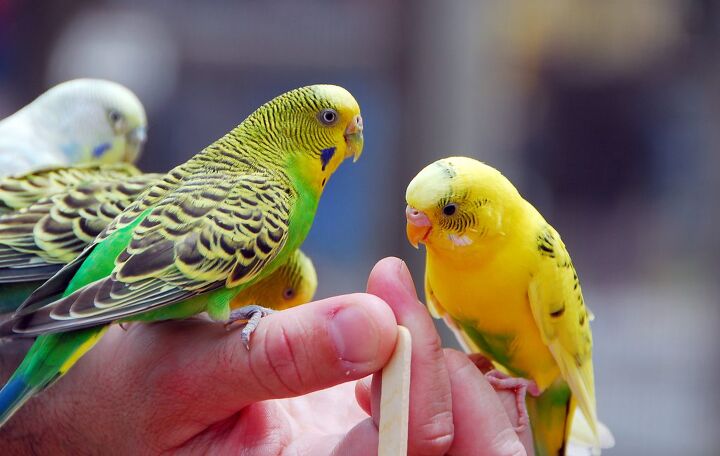Budgerigar Parakeet


About Budgerigar Parakeet
As the earliest English explorers and zoologists ventured deeper into the Australian continent rich in wildlife, amongst the many lively birds and animals, one species stood out – the Budgerigar Parakeet. Quickly captivating the attention of their discoverers, these colorful parrots became a desired pet and companion. They were first mentioned and detailed in 1805, by an English zoologist George Shaw, while some thirty five years later, the Budgerigar Parakeet was finally properly named by John Gould, an ornithologist and bird lover of great reputation.
Budgerigars are one of Australia’s most vibrant and lively national symbols.
These parakeets thrived for millions of years in their harsh natural home in Australia’s dry regions, where they are still a common sight- and a borderline national symbol. The arid and hot landscape of its habitat is an all too obvious reason for the hardiness this bird possesses and its inherent ability to adapt and thrive in different conditions. In fact, its adaptability may be the main reason why the Budgerigar Parakeet became one of the most widespread and common pets we know today.
All Budgerigar Parakeets are known for their unique and wildly colorful appearance and amiable personalities. They usually grow around 7-8 inches (~18 cm) in overall length and can live to be up to 10 years old in ideal conditions. The weight of these petite birds doesn’t exceed more than 40 grams! But don’t let their size fool you: Budgerigar Parakeets are well known for their ability to persevere and thrive in many global climates.
Like many different parrot species, the budgerigars are champions when it comes to talking and mimicry of human voices and everyday sounds. Both sexes, males especially, can develop an abundant vocabulary of words they memorize and mimic. This behavior is often best observed in solitary male Budgerigar Parakeets that are most talkative. Budgerigars are also great singing birds, developing a lovely song of smooth melodies, woven with adorable whistles.
The vivid and lively coloration of the feathers with distinguishing patterns is one of the prominent features of a Budgerigar. The varied palette of their plumage is what made them stand out among the spectacular specimens of Australian wildlife: it can go up to a 100 different shades and color combinations, but most of the common ones remain the green, yellow, blue, white and gray, or their various hues. Budgies can be divided into two groups: white-based (blue being the most common) and yellow-based (popular green Budgerigars).
The other prominent aspect is the intricate pattern adorning their nape, back, and wings, displayed through mixed black lines and dotted designs, adding to their overall unique appearance.
These small parakeets boast vibrant and unique color variations of feathers.
As these parrots are highly common, so is their food, which is also varied and comes in many different versions. Most common are the mixtures of bird seed that are readily available and will make a fine staple diet for your Budgie. The quality of these mixes can vary, so choose the best you can.
As a supplement to their diet, an excellent choice would be an occasional piece of fresh fruit or veggie, as well as mineral blocks to increase iodine and vitamins intake and give your parrot a chance to take care of its beak.
If you take proper care of your Budgerigar Parakeet, they shouldn’t have any serious health issues or behavioral problems. Some of the common conditions that might occur in these birds are the splay leg that can happen during earliest development, as well as feather picking, which is a direct result of loneliness and lack of attention. As long as you do your best to provide optimal benefits, roomy cage and company, paired with staple diet – your budgerigar will live a long and happy life.
Budgies require a minimal amount of care, as they are strong and healthy birds.
Budgerigar Parakeets are highly social birds. Their well-being depends on having company – whether it is yours or of a mate. They also require a roomy cage and plenty of natural light, as well as a chance to fly about freely, at least once in a while. Don’t hesitate to open the cage up and let them fly around the room for a bit, perhaps while you take care of the hygiene of their cage – another important aspect to remember. Of course, it goes without saying that during your parakeet’s time outside, all windows and doors should be closed and no other pets should be present in the room.
Providing your budgie with much needed attention will allow them to thrive and be what they really are – a lively and vibrant pet parrot!
Photo credit: photomaster/Shutterstock; dashingstock/Shutterstock; Krunja/Shutterstock

A proud mama to seven dogs and ten cats, Angela spends her days writing for her fellow pet parents and pampering her furballs, all of whom are rescues. When she's not gushing over her adorable cats or playing with her dogs, she can be found curled up with a good fantasy book.
More by Angela Vuckovic

























